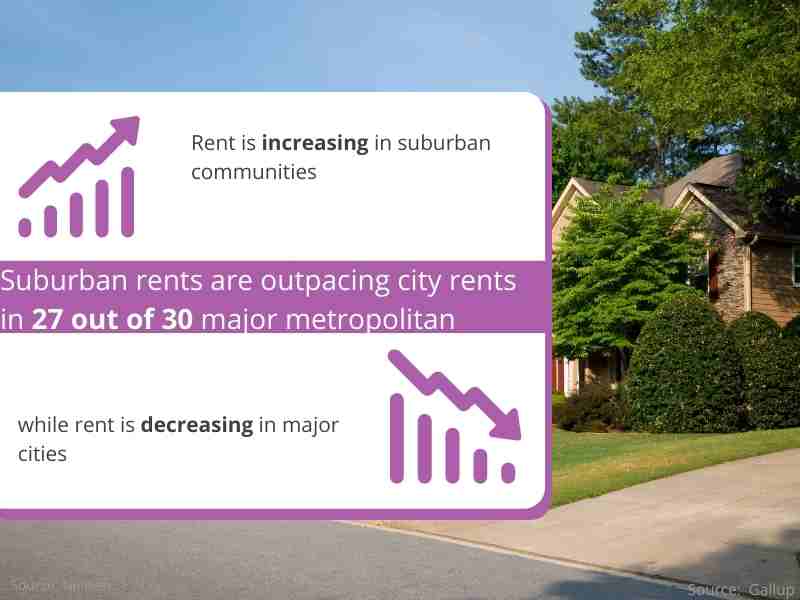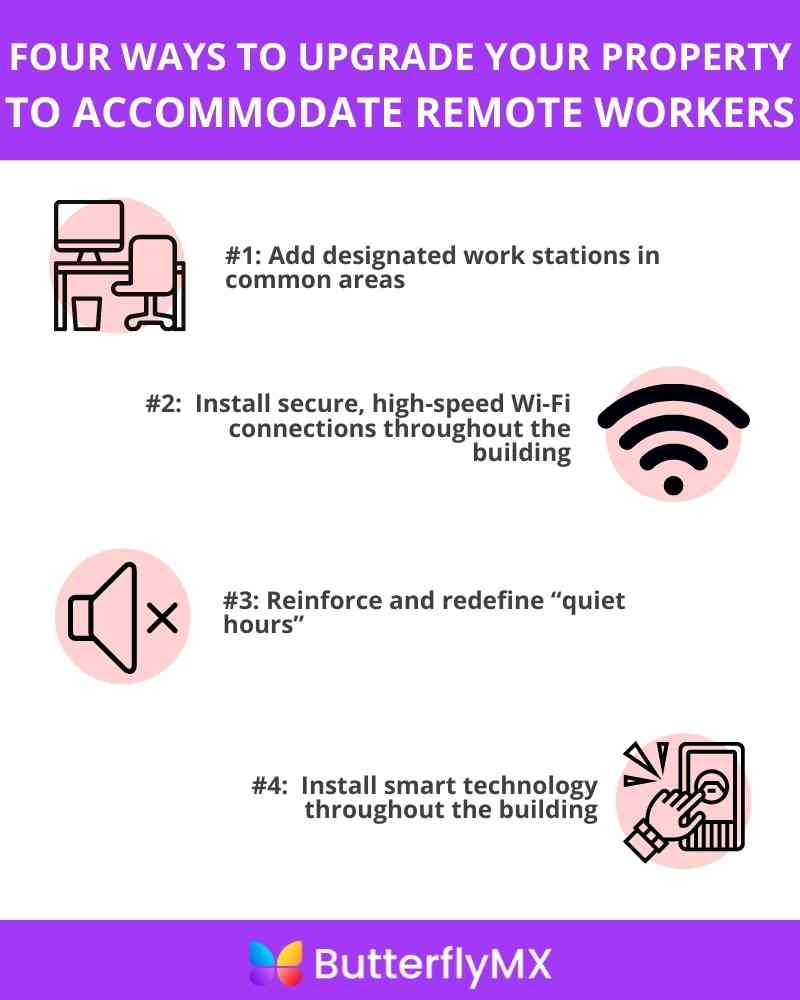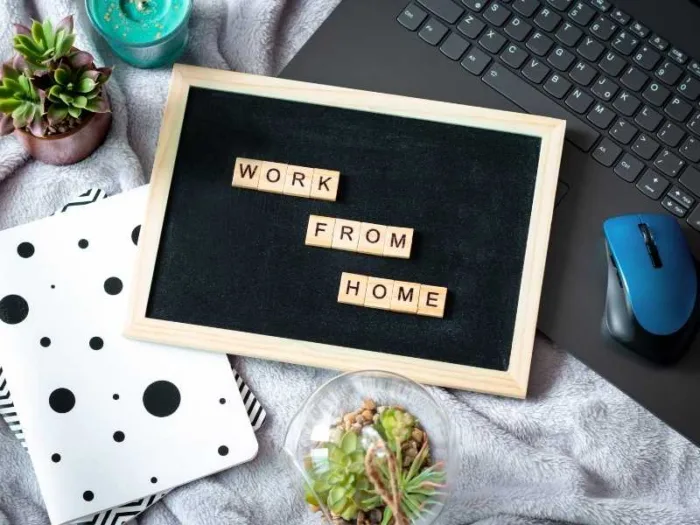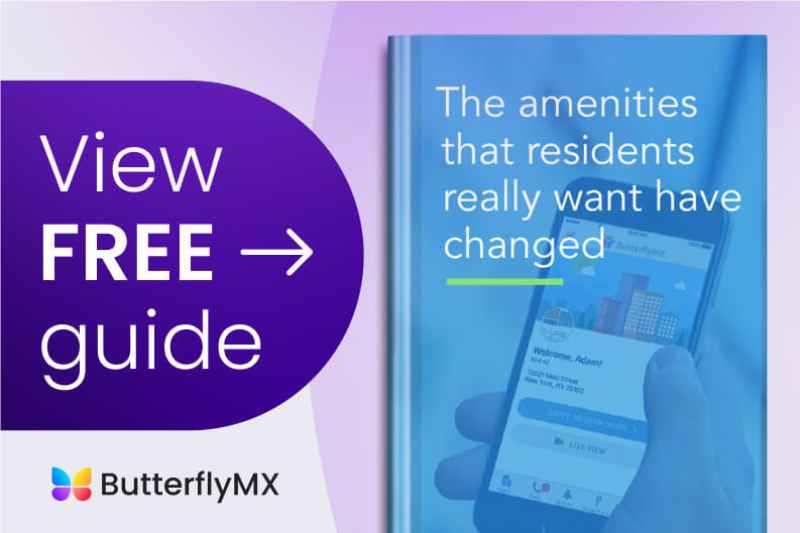
In January 2020, only 10% or less of Americans worked remotely full time. But now, about 25% of the US labor force is expected to continue working remotely even after COVID-19 is long gone.
So, what does this mean for you as a multifamily property owner, developer, or manager? The shift to working from home has profound implications for the real estate industry. Renters and buyers now look for building technology and coworking spaces when apartment-hunting.
Read on to learn more about the work-from-home trend and how you can upgrade your apartment building to accommodate remote workers.
This post covers:
- How and when the work-from-home (WFH) trend started
- Where are renters and buyers moving to now?
- How you can upgrade your building to accommodate remote workers
- WFH is the “new normal” that’s here to stay
How and when the work-from-home (WFH) trend started
Remote work is not new, nor did it occur overnight with the creation of the internet. For most of history, people literally worked where they lived – like on farms and in ground-level workshops – or at most, their work was a short walk away. During the Industrial Revolution of the 1870s through the early 1900s, people started to commute to designated “office spaces.”
This era increased the need for automation and the creation of factories. Machinery and assembly lines required employees to be on-site to complete their work. Then, the birth of large-scale innovations such as the telephone system, typewriters, and public electricity developed the modern-day office.
Efforts for cleaner air and greener energy
In the 1970s, the US government started the clean air movement, which encouraged employees to work from home. This was an effort to reduce carbon emissions. NASA physicist Jack Nilles published The Telecommunication-Transportation Tradeoff. In it, he proposed working from home as a solution to car congestion as well as limited resources like gasoline. He coined the term “remote work.”
In fact, IBM allowed five of its employees to work from home as an experiment in 1979. Four years later, around 2,000 IBM employees worked remotely. By 2009, 40% of its 386,000 global employees were already working from home.
The 1990s internet boom to the present day
Of course, the advent of the internet and personal computers contributed to more Americans opting to work from home. In 1995, Congress approved permanent funding for work-related equipment in federal employees’ homes. And by 2004, all federal employees could telecommute.
As millennials entered the workforce, the “gig economy” started to flourish around the time of the 2008 financial crisis. Today, instead of working a regular 9 to 5 office job, millennials are more likely to freelance for one or more companies. A survey from Upwork and Freelancers Union shows that millennials are now the largest demographic in the American workforce, and 42% of 18-to-34-year-olds now freelance, up from 38% in 2014.

The popularity of freelance and remote work birthed coworking offices – such as WeWork and Spaces – which changed the real estate landscape. By 2018, 70% of the world’s population was working remotely at least once a week – 53% for at least half the week. Real estate is now an on-demand product. Long gone are the years when companies sign 10-year leases for offices. In the same vein, millennials and younger generations are more likely to rent apartments or houses, not buy. Renting gives them the freedom and flexibility to change jobs, travel, and save money.
And, of course, COVID-19 forced hundreds of millions of people to work from home. This brought remote work to a tipping point. Many experts predict that this working-from-home trend will become more permanent. People are going back to the basics and closer to the lives they want. For that to be possible, they cannot be tied down to a specific location, but rather have greater flexibility and mobility.

Where are the WFH renters and buyers moving?
Smaller cities and communities turn into “Zoom towns” as workers move into them for more space and lower costs. In 2020-2021, New York City residents moved to suburbs outside the city, and those areas have seen their economies blooming from this. Data from Zillow and Apartment List showed the list of smaller towns and suburbs that have seen upticks in rentals and purchases.

Cities and communities that attracted remote workers:
- Gilbert, Arizona
- Boulder, Colorado
- Bentonville, Montana
- Tulsa, Oklahoma
- Bozeman, Montana
- Jackson Hole, Wyoming
- Truckee, California
- Hudson Valley, New York
Another upside to remote work is that recruiters can cast a wider net for job candidates. And companies don’t need to worry about paying for relocation expenses. Despite the misconception that remote workers are slackers or spend most of their time on social media, working from home has proven to be more efficient than working in offices. Employees no longer need to waste time commuting or sitting in unnecessary meetings.
Even if employers expect their workers to come back to the office, many will be able to work remotely for at least part of the week. In the coming years, more renters will opt to live in places with more space and greater access to outdoor areas. So, this is more the reason why you should upgrade your multifamily buildings to suit remote workers better.
How you can upgrade your building to accommodate remote workers
Amid the increasing WFH trend, now is the time to upgrade your multifamily apartment to accommodate remote work. Apartment amenities and services that increase productivity are a must. You must cater to the needs of prospective and existing residents. This will not only lead to more lease renewals but will also bring in new tenets through referrals.
Here are four ways you can upgrade your property for this WFH era:
- Add designated work stations in common areas
- Install secure, high-speed Wi-Fi connections throughout the building
- Reinforce and redefine “quiet hours”
- Install smart technology throughout the building

1. Add designated work stations in common areas
Working in the same space where they sleep and eat can present its own unique challenges for residents. This is especially true if they have young children who love to make guest appearances on work video calls.
This is where you come in. You can accommodate these residents by designating working stations or privacy booths throughout the building. In fact, coworking spaces were gaining favor as an amenity even before 2020.
Even if you don’t currently have business centers or coworking space in your building, you can turn existing spaces into working stations. For example, the apartment lounge can be transformed into a coworking space. Switch out the couches with individual lounge chairs with tablet arms. Additionally, you can add plexiglass or dividers to community-style tables to mimic office cubicles and enforce social distancing. Your residents will love these working nooks, pods, or booths.
2. Install secure, high-speed WiFi connections throughout the building
Advanced technology has contributed to the WFH trend in the recent decade. Although residents have WiFi in their units, they need an internet connection when working in common areas.
To make your community workspace as enticing as possible, install high-speed, secure, and reliable WiFi routers in each common area. A swanky coworking space is useless if it doesn’t have a good internet connection.
The cost of shared internet can be allocated from your amenity fees, or you can increase the price. A 2020 NMHC survey found out that residents are willing to pay higher rent for high-speed internet access.

3. Reinforce and redefine “quiet hours”
You probably designate nighttime as “quiet hours,” when you ask residents to reduce noise levels. However, during a WFH era, you might need to reinforce and redefine those “quiet hours.” You don’t want a resident to turn up the stereo to the maximum volume during business hours when other residents are hard at work.
Not only are there people working from home in your building, but there are also students e-learning, taking tests, and doing homework. Besides reinforcing “quiet hours,” you might want to add soundproof installations throughout the halls or place carpet flooring to reduce noise transfers.
4. Install property technology throughout the building
Your building won’t be suitable for the modern-day remote worker if it’s not equipped with the latest smart building technology. During a time when technology has made working remotely possible for the masses, go one step further and use technology to streamline and improve residents’ quality of life.
As the work-from-home trend continues to grow, it’s finally time to invest in property technology (proptech) amenities. Not only can proptech elevate residential life, but its contactless and touchless features follow the health guidelines that will remain in place for years to come.
Here are some ways proptech can improve remote work:
- Video intercom systems accommodate safe food delivery and on-demand services
- Smart keys reduce resident lock-outs
- Package rooms ensure successful and organized deliveries
Video intercom system for safe food delivery and on-demand services
One of the biggest misconceptions about working from home is that employees have more time on their hands. Yet, quite the opposite is true. Remote workers may have more challenges achieving the work-life balance than before.
On top of doing the same amount of work-related tasks, often even more, they also need to take care of their children and juggle household responsibilities. So, many will opt to hire on-demand services – such as TaskRabbit and Handy – and order food delivery to ease the strain. Installing an access control system like a video intercom allows residents to safely and easily grant property access to food delivery people and service personnel.

Smart keys to reduce resident lock-outs
When working from home, residents will go in and out of their homes several times throughout the day. Whether they’re taking out the trash or taking a call in the lobby, residents might not remember to take their keys each time they walk out of the door. And it’s time-consuming for you and your team to send a staff member up to unlock the door for residents each time they accidentally lock themselves out.
That’s why you should install smart locks on each apartment door. Smart locks let residents open doors from an app on their smartphones, saving time for everyone.
Package rooms to account for increased online shopping
Online shopping and the e-commerce industry are only growing. This means that package deliveries to your property will increase, too.
To accommodate this trend, you need to set up a package room in your multifamily building. Setting up a package room only entails installing a video intercom system at the door and placing some shelves in the room. It’s simple for couriers to scan packages into the system and place them in the room. Choose a package room solution that automatically notifies. A resident when they’ve received a package.
Both your staff and residents will enjoy this amenity. It frees up time for staff members since they don’t need to organize and process each package. And it gives residents the freedom and peace of mind to retrieve their deliveries from a secure room at any time.
WFH is the “new normal” that’s here to stay
Regardless of your location, you’ll see an increase in the number of residents working from home. The world is changing the way people conduct business and live their lives. The work-from-home trend has been on the rise for years and has only accelerated in the past year. Many industries are embracing full- or part-time remote work. As a property manager, developer, or owner, you can respond to this “new normal” by updating and redesigning your buildings to accommodate residents working from home.







